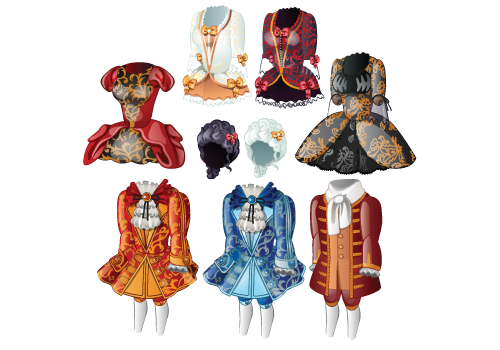Even as far back as the Renaissance, people did not just wear outfits of any colour. Red was limited to high ranking nobles, the Church - as a symbol of authority, and judges. Orange was preferred by middle class merchants and peasants who attempted to imitate the nobility with cheaper orange dyes. The Renaissance believed that green represented young love, joy and chastity. A young woman of marriageable age was expected to wear light blue but turquoise was a sure sign of jealousy. Lastly, greys were the shade of poverty and black was exclusively worn to depict solemnity and mourning!
